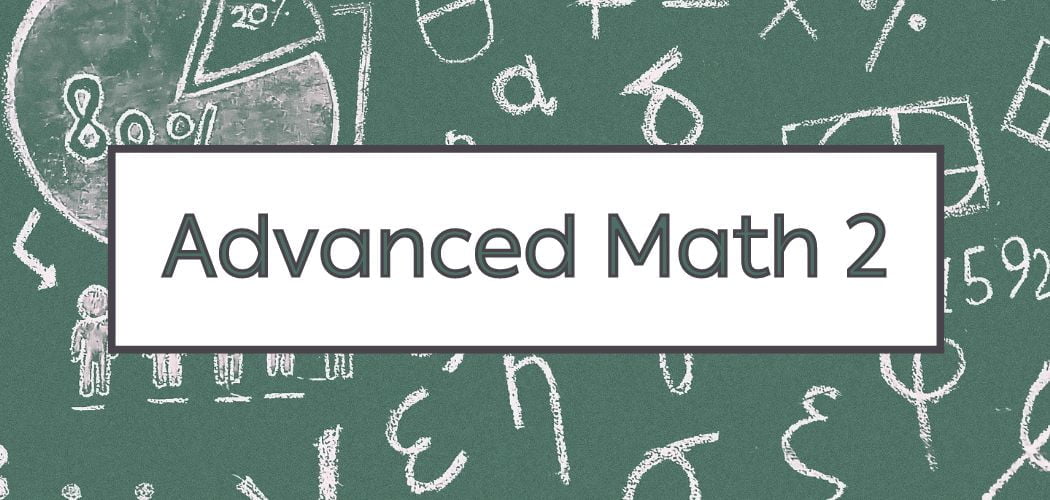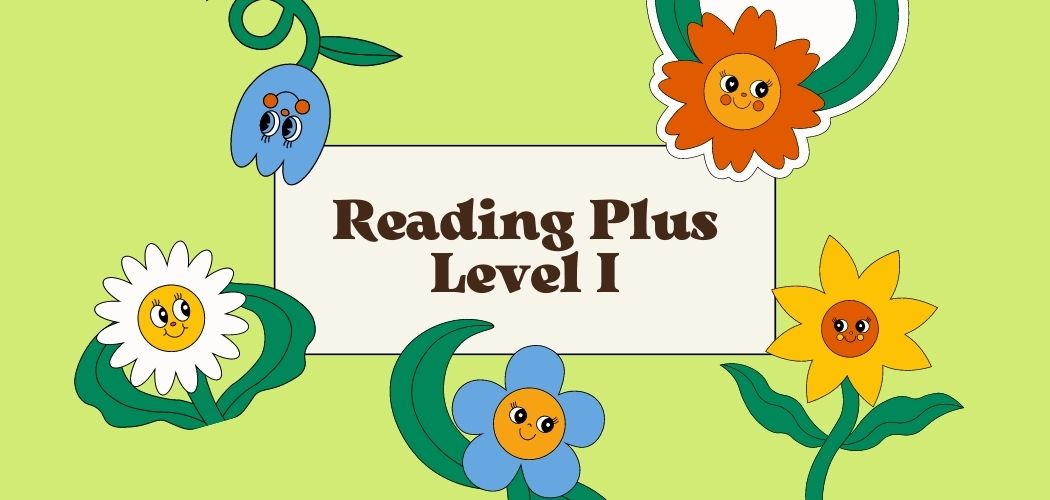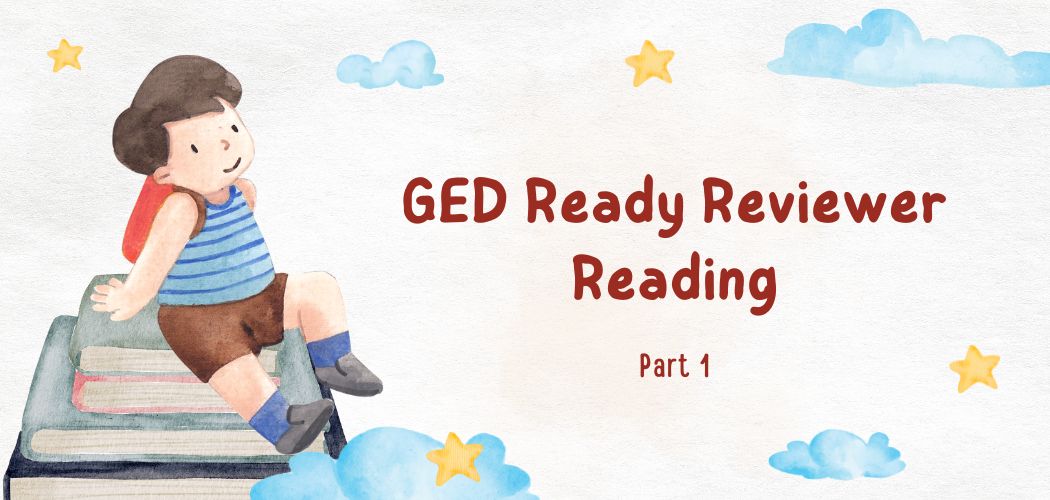This is an important test that requires preparation. Since it is a computer-based exam, The test questions are scrambled to protect its integrity. We recommend reading the following articles to know more about the exam and learn key strategies that’ll help you make big improvements during the actual tests.
This is Part-1 of our free GED reviewer for Social Science. Topics included in this review are material history, geography, economics, and civics. The exam is designed to test your knowledge and understanding of social science.
GED Ready Social Science reviewer
Read the statement below and answer the following question.
When prices rise, supply increases. When prices fall, supply decreases. When prices increase, demand falls. When prices fall, demand increases.
Question 1. Which of the following is true?
A. Consumers will buy more apples when the price per dozen goes up by $1.50.
B. Consumers will buy less ice cream when the price per carton goes down by $1.
C. Manufacturers will produce more tires when the price per tire goes up by $8.✅
D. Farmers will produce additional beans when the price per ton goes down by $10.
The table below shows the data of the US Election during 2016:
| Candidate | Party | Popular Votes | Percentage of Popular Votes |
|---|---|---|---|
| Donald Trump | Republican | 62, 984, 825 | 46.09 |
| Hilary Clinton | Democratic | 65, 853, 516 | 48.18 |
| Gary Johnson | Libertarian | 4, 489, 221 | 3.28 |
Question 2. Which statement about the popular vote in the 2016 presidential election is supported by the data in the table?
A. No candidate received a majority of the popular vote.✅
B. Donald Trump received a majority of the popular vote.
C. Donald Trump would have received a majority of the popular vote if he had received all of Johnson’s support.
D. Hilary Clinton received a majority of the popular vote.
Read the excerpt below from The Declaration of Independence:
…whenever any Form of Government becomes destructive of these ends, it is the Right of the People to alter or to abolish it, and to institute new Government, laying its foundation on such principles and organizing its powers in such form, as to them shall seem most likely to effect their Safety and Happiness.
Question 3. From the excerpt, what does the term abolish mean?
A. change
B. validate
C. ignore
D. eliminate✅
The graph below shows data from the United States census.

Question 4. Based on the data, which of the following statements is correct?
A. In 2010, blacks were the smallest population group in the US.
B. In 2010, Hispanics were the largest non-white population group.✅
C. In 2010, Asians were the largest non-white population group.
D. In 2010, whites accounted for less than half of the US population.
Read the excerpt below from the US Constitution and answer the following question.
Article 1, Section 8 – “The Congress shall have Power To… raise and support Armies… To provide and maintain a Navy… to provide for organizing, arming, and disciplining the Militia.”
Article 2, Section 2 – “The President shall be Commander in Chief of the Army and Navy of the United States, and of the Militia of the several States.”
Question 5. Which fundamental principle of US democracy do these excerpts reflect?
A. Judicial Review
B. Federalism
C. Separation of Powers✅
D. Limited Government
Analyze the given picture below and answer the following question.
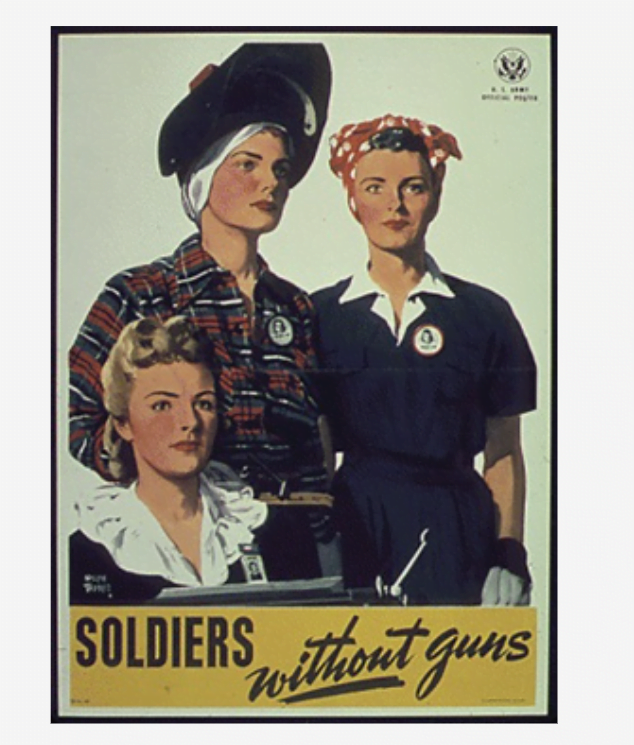
Question 6. This poster of World War II represents what function?
A. Encourage the Axis powers to end the war.
B. Promote support for the war.✅
C. Demonstrate the ineffectiveness of guns.
D. Encourage the Axis powers to end the war.
For questions 7 and 8. Examine the illustration below and answer the question that follows.
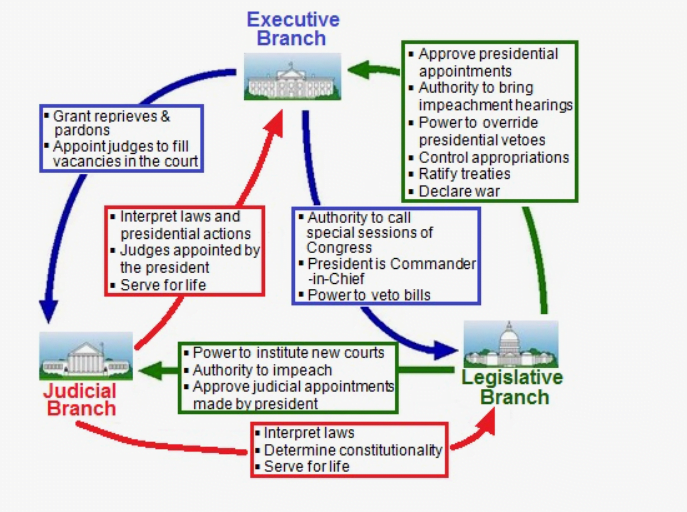
Question 7. The chart best illustrates which of the following principles?
A. Checks and Balances✅
B. Judicial Review
C. Popular Sovereignty
D. Federalism
Question 8. Which branch of government approves new judges to serve on the Supreme Court?
A. The Executive Branch
B. The Judicial Branch
C. The Legislative branch✅
D. The Voters
Question 9. Three of the choices below are based on facts and evidence about the Korean War. Which of the following choices is based on opinion and speculation?
A. The Korean War was the first time jet fighters faced each other in combat.
B. The United States may have won the Korean War if General Douglas MacArthur had been permitted to use nuclear weapons against Communist forces.✅
C. The Korean War began in 1950 and ended with an armistice in 1953.
D. More than 34,000 American soldiers died during the Korean War.
Review the following timeline:
1932 – FDR is elected to his first term as president.
1933 – FDR signs a law repealing Prohibition.
1936 – FDR is elected to a second term in office.
1940 – FDR is elected to a third term in office.
1941 – Japan attacks Pearl Harbor and the US enters WWII.
1944 – FDR is elected to a fourth term in office.
1945 – The US wins WWII.
1947 – The 22nd Amendment is introduced which limits presidents to two four-year terms.
Question 10. What conclusion is supported by the information in the timeline?
A. The attack on Pearl Harbor helped FDR win a third term in office.
B. Voters elected FDR to a fourth term in order to show their appreciation for victory in WWII.
C. The 22nd Amendment was a response to FDR’s unprecedented four terms in office.✅
D. FDR failed to fulfill a campaign promise to repeal Prohibition.
For questions 11 and 12, review the data below and answer the following question.
| Union | Confederate State of America |
|---|---|
| Most of the nation’s factories, railroad tracks, and canals were found in the north. | Primarily agriculture-based economy throughout the south. |
| The population was over 22 million people | The population was about 9 million free people, along with 3.5 million slaves |
| Factory systems produced guns, clothing, and shoes to supply the Union army. Build ships that allowed the Union to blockade Confederate ports. | Produced food such as corn, rice, wheat, and livestock, along with cotton in the deep south. |
| Solid banking and financial industry helped finance the war. | Relied on Northern banks for investment money |
| Lacked strong generals and leadership. | Has a strong military mindset and excellent leadership |
| Most battles occurred in the south. | Fighting to defend their homeland and way of life. |
Question 11. What is the most likely reason that the Confederate States of America won several major battles early in the Civil War?
A. The Confederacy produced more food.
B. The Confederacy had a great supply line to fortify its troops with guns and ammunition.
C. The Confederacy had a much larger army
D. The Confederacy had superior military generals who outmaneuvered the Union troops.✅
Question 12. What was the primary goal of the Confederacy in fighting the Civil War?
A. To remain an independent country where slavery was permitted
B. To wipe out the Union and destroy the northern states✅
C. To take control of the federal government of the United States|
D. To rejoin the United States
Question 13. Which of the following questions about NASA’s budget would be the most difficult to answer?
A. How much do we spend on astronaut training annually?
B. Does the United States spend too much money on space exploration?✅
C. How does NASA spend its money?
D. How much of an increase did NASA receive over last year’s budget?
Refer to the given graph below and answer the question that follows.

Question 14. Given the above information, which of the following statements is the most logical conclusion?
A. A higher unemployment rate leads to more tax fraud
B. A lower unemployment rate leads to more tax revenue✅
C. A higher unemployment rate leads to more tax revenue
D. There is no relationship between unemployment and tax revenue
Question 15. Under the US Constitution, which body has the sole authority to declare war?
A. The Secretary of Defense
B. The President
C. The U.S. Congress✅
D. The chairman of the Joint Chiefs of Staff
For questions 16 and 17 refer to the chart below and answer the questions that follow.

Question 16. According to the chart, which of the following states does not require a mental health background check to purchase a firearm?
A. Illinois
B. Texas
C. Florida
D. California✅
Question 17. The “right to bear arms” is granted by which amendment of the United States Constitution?
A. First Amendment
B. Second Amendment✅
C. Fifth Amendment
D. Tenth Amendment
Read the excerpt below from President Woodrow Wilson’s April 2, 1917, Address to Congress and answer the following question.
The present German submarine warfare against commerce is warfare against mankind. It is a war against all nations. American ships have been sunk, and American lives were taken in ways which it has stirred us very deeply to learn of, but the ships and people of other neutral and friendly nations have been sunk and overwhelmed in the waters in the same way. There has been no discrimination. The challenge is to all mankind.
Each nation must decide for itself how it will meet it. The choice we make for ourselves must be made with a moderation of counsel and a temperateness of judgment befitting our character and our motives as a nation. We must put excited feeling away. Our motive will not be revenge or the victorious assertion of the physical might of the nation, but only the vindication of right, of human rights, of which we are only a single champion.
Question 18. Which of the following statements is a logical inference based on evidence from the passage?
A. President Wilson wants to wait and see how other nations respond to the German attacks before declaring war.
B. President Wilson believes fear and anger should stir American support for a war against Germany.
C. President Wilson believes that the US should retaliate against the Germans regardless of what other countries decided.✅
D. President Wilson does not want the US to retaliate against the Germans.
The following excerpt is from the November 1, 2008 edition of the New York Times:
While each of Florida’s 27 electoral delegates represents almost 480,000 eligible voters, each of the three delegates from Wyoming represents only 135,000 eligible voters. That makes a voter casting a presidential ballot in Wyoming three and a half times more influential than a voter in Florida.
This system, along with the winner-take-all practice used to allocate most states’ electoral votes, creates the potential for an absurd outcome. In the unlikely event that all 213 million eligible voters cast ballots, either John McCain or Barack Obama could win enough states to capture the White House with only 47.8 million strategically located votes. The presidency could be won with just 22 percent of the electorate’s support, only 16 percent of the entire population’s.
Question 19. Which of the following statements from the passage is an opinion and not a fact?
A. “The presidency could be won with just 22 percent of the electorate’s support, only 16 percent of the entire population’s.”
B. “This system, along with the winner-take-all practice used to allocate most states’ electoral votes, creates the potential for an absurd outcome.”✅
C. “That makes a voter casting a presidential ballot in Wyoming three and a half times more influential than a voter in Florida.”
D. “While each of Florida’s 27 electoral delegates represents almost 480,000 eligible voters, each of the three delegates from Wyoming represents only 135,000 eligible voters.”
Review the given data below and answer the following question.

Question 20. What would be the best title for the data given?
A. Understanding the advantages the Confederacy had over the Union
B. Understanding why the Union won the Civil War
C. Comparison of military supplies of the Union and Confederacy armies
D. Comparing the advantages and disadvantages of the Union and Confederacy✅
